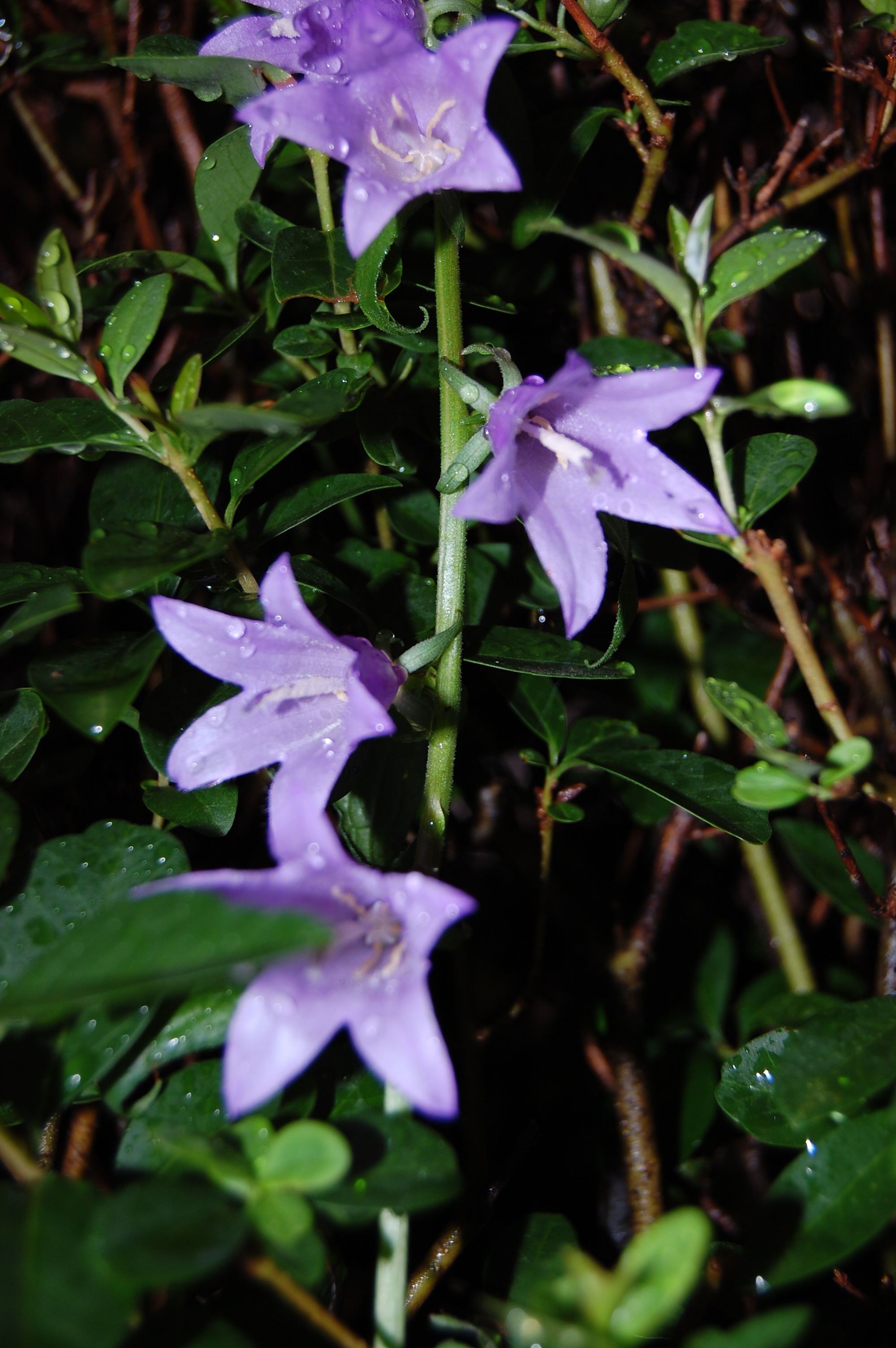Creeping Campanula (a.k.a. Campanula rapunculoides or Creeping Bellflower) can seem to take over a garden bed overnight after a drenching rain. But its purplish-bluish petals are adding tasty beauty to the daily, free, green weed salads I toss together.
I am wondering: Could leaving invasive plants and animals alone, or even cultivating some, turn out to be better and more do-able in the long run than our current Herculean (and seemingly Sisyphean) efforts to eradicate them from affected ecosystems? Would natural processes restore a new, different but at least OK (or maybe even better), state of balance, eventually?
Some scientists are calling this geologic time period the Anthropocene. Is this because humans have spread and thrived, unchecked as Earth's original and dominant invasive species?
Is it possible to return all creeping, out-of-bounds lifeforms to their native lands and restore all the planet's ecosystems, in principle, let alone in practice? Resetting Pandora's Box might be easier.
I just started reading this pro-weed book: "Weeds - Guardians of the Soil" by Joseph A. Cocannouer (Copyright, 1950, by the Devin-Adair Company). To balance that, I have been studying the USDA's National Invasive Species Information Center.

Creeping Campanula in Nebraska in June, by JeffCoffman on Flickr.com (Beautiful, tasty and plentful!)




Comments